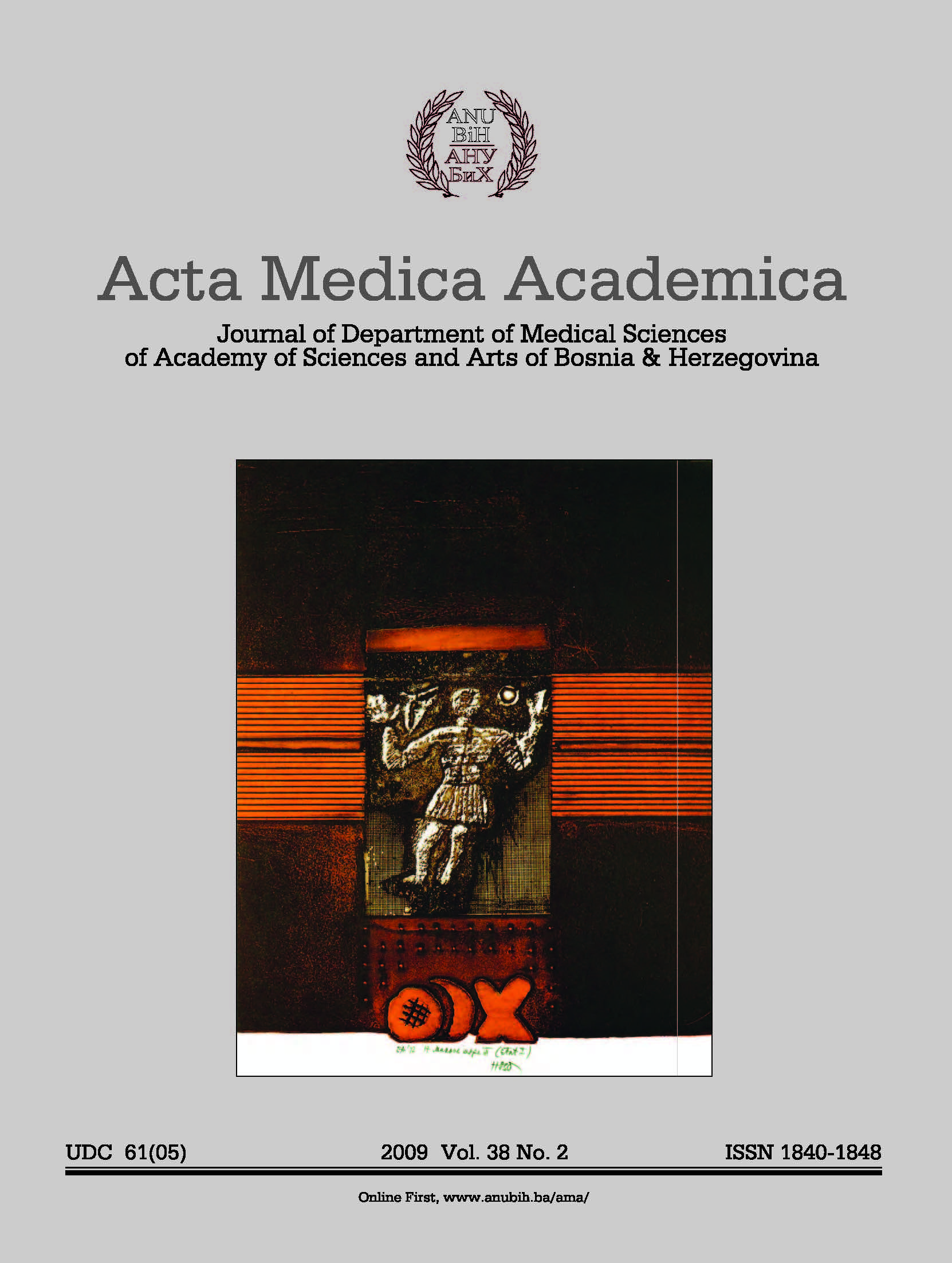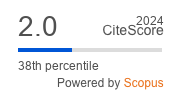Biliary atresia
Keywords:
Neonatal cholestasis, Biliary atresia, Kasai portoenterostomy, Liver transplantationAbstract
Biliary atresia (BA) remains a puzzling medico-surgical conditionmore than 100 years after its original description. Itis the most important disease in paediatric hepatology andthe most frequent indication for liver transplantation in childrenand young adults. BA occurs sporadically in around 1/17,000 live births in Europe and North America and thereis no risk of recurrence within the same family. In patho-anatomicalterms, BA is characterised by a progressive ascendingobstruction of the biliary tree which evolves into biliarycirrhosis and end stage chronic liver disease within infancy.Corrective surgery – portoenterostomy or the “Kasai operation”can be effective in up to 50-60% of timely operated children,whilst the others should be considered for early livertransplantation. Medical treatment is important to provideoptimal nutrition during chronic cholestasis and ensure thenormal physical and neurological development of the affectedinfants. Early and precise diagnosis is of critical importancesince delaying surgery may reduce the chances of a successfuloutcome, while unnecessary surgery for unrecognised otherinfantile cholestatic conditions is deleterious. Diagnostic algorithmsvary depending on the local expertise, but mostcentres use expert ultrasonography and percutaneous liverbiopsy, as clinical examination and biochemical findings arenon-specific. Most children with prolonged neonatal conjugatedhyperbilirubinaemia will have pale stools, dark urine, adegree of soft hepatosplenomegaly and mildly elevated transaminases.Acholic stools point strongly in the direction of asurgical problem. In ambiguous cases, direct cholangiography,preferably endoscopic retrograde cholangiopancreatography(ERCP), performed at specialized centres, will be diagnosticand spare unnecessary laparotomy, if not indicated. The aetiologyof BA remains uncertain. Its inflammatory nature is undoubtedand many centres use steroids routinely post-Kasaiportoenterostomy in the hope of reducing the inflammatorycomponent and minimising ensuing fibrosis and progressionto cirrhosis. The scientific evidence for the benefit of steroidsis lacking and there is a lively ongoing research debate aboutfurther means of improving the postoperative outcome includingthe use of steroids at different doses and regimens,and proinflammatory cytokine-blocking agents in the future.References
Thomson J. Congenital obliteration of the bile ducts, Oliver & Boyd, Edinburgh; 1892.
McKiernan PJ, Baker AJ, Kelly DA. The frequency and outcome of biliary atresia in the UK and Ireland. Lancet. 2000;355:25-9.
Chardot C, Carton M, Spire-Bendelac N, Le Pommelet C, Golmard JL, Auvert B. Epidemiology of biliary atresia in France: a national study 1986-1996. J Hepatol. 1999;31:1006-13.
Sokol RJ, Mack C, Narkewitz MR, Karrer FM. Pathogenesis and outcome of biliary atresia: current concepts. J Pediatr Gastroenterol Nutr. 2003;37:4-21.
Davenport M, Kerkar N, Mieli-Vergani G, Mowat AP, Howard ER. Biliary atresia: the King’s College Hospital experience. J Pediatr Surg. 1997;32:479-85.
Farrant P, Meire HB, Mieli-Vergani G. Improved diagnosis of extrahepatic biliary atresia by high frequency ultrasound of the gall bladder. Br J Radiol. 2001;74:952-4.
Park WH, Choi SO, Lee HJ, Kim SP, Zeon SK, Lee SL. A new diagnostic approach to biliary atresia with emphasis on the ultrasonographic triangular cord sign: comparison of ultrasonography, hepatobiliary scintigraphy, and liver needle biopsy in the evaluation of infantile cholestasis. J Pediatr
Surg. 1997;32:1555-9.
Shanmugam NP, Harrison PM, Devlin J, Peddu P, Knisely A, Davenport M, et. al. Selective Use of Endoscopic Retrograde Cholangiopancreatography in the Diagnosis of Biliary Atresia in Infants Younger Than 100 Days. J Pediatr Gastroenterol
Nutr. 2009 Aug 11. [Epub ahead of print] PubMed PMID: 19680152.
Davenport M, Tizzard SA, Mieli-Vergani G, Hadzic N. Biliary atresia splenic malformation syndrome: a 28 year single center experience. J Pediatr. 2006;149:393-400.
Davenport M. A challenge on the use of the words embryonic and perinatal in the context of biliary atresia. Hepatology. 2005;41:403-4.
Diem HV, Evrard V, Vinh HT, Sokal EM, Janssen M, Otte JB, et al. Pediatric liver transplantation for biliary atresia: results of primary grafts in 328 recipients. Transplantation. 2003;75;1692–7.
Shneider BL, Brown MB, Haber B, Whitington PF, Schwarz K, Squires R, et al. Biliary Atresia Research Consortium. A multicenter study of the outcome of biliary atresia in the United States, 1997 to 2000. J Pediatr. 2006;148:467-4.
Davenport M, Caponcelli E, Livesey E, Hadzic N, Howard ER. Surgical outcome in biliary atresia: etiology affects the influence of age at surgery. Ann Surg. 2008;247:694-8.
Taylor RM, Cheeseman P, Davenport M, Tizzard SA, Goldblatt D, Mieli-Vergani G, et. al. Humoral immunity in children with biliary atresia splenic malformation syndrome. Eur J Pediatr.
;162:539-40.
Kasai M, Suzuki S. A new operation for “non correctable” biliary atresia portoenterostomy. Shijitsu,. 1959;13:457–81.
Ohi R, Hanamatsu M, Mochizuki I, Chiba T, Kasai M. Progress in the treatment of biliary atresia. World J Surg. 1985;9:285-93.
Hadzic N, Tizzard S, Davenport M, Singer J, Howard ER, Mieli-Vergani G. Long term outcome of biliary atresia; is chronic liver disease inevitable? J Pediatr Gastroenterol Nutr. 2003;37:430-3.
Mieli-Vergani G, Howard ER, Portmann B, Mowat AP. Late referral for biliary atresia – missed opportunities for effective surgery. Lancet.1989;1:421-3.
Davenport M, Puricelli V, Farrant P, Hadzic N, Mieli-Vergani G, Portmann B, et al. The outcome of the older (>/=100 days) infant with biliary atresia. J Pediatr Surg. 2004;39:575-81.
Castagnetti M, Davenport M, Tizzard SA, Hadzic N, Mieli-Vergani G, Buxton-Thomas M. Hepatobiliary scintigraphy after Kasai procedure for biliary atresia: clinical correlation and prognostic value. J Pediatr Surg. 2007;42:1107-13.
Hinds R, Davenport M, Mieli-Vergani G, Hadzic N. Antenatal diagnosis of biliary atresia. J Pediatr. 2004;144:43-6.
Donaldson PT, Clare M, Constantini PK, Hadzic N, Mieli-Vergani G. Howard ER, et al. HLA and cytokine gene polymorphisms in biliary atresia. Liver 2002;3:213-9.
A-Kader HH, El-Ayyouti M, Hawas S, Abdalla A, Al-Tonbary Y, Bassiouny M, et al. HLA in Egyptian children with biliary atresia. J Pediatr. 2002;141:432-4.
Yasa T, Tsuji H, Kimura S, Niwa N, Yurugi K, Egawa H, et al. Human leukocyte antigens in Japanese patients with biliary atresia: retrospective analysis of patients who underwent living donor liver transplantation. Hum Immunol. 2005;66:295-300.
Davit-Spraul A, Baussan C, Hermeziu B, Bernard O, Jacquemin E. CFC1 gene involvement in biliary atresia with polysplenia syndrome. J Pediatr. Gastroenterol Nutrr. 2008:46;11-2.
Mazziotti MV, Willis LK, Heuckeroth RO, LaRegina MC, Swanson PE, Overbeek PA, et al. Anomalous development of the hepatobiliary system in the Inv mouse. Hepatology. 1999;30:372-8.
Rauschenfels S, Krassmann M, Al-Masri AN, Verhagen W, Leonhardt J, Kuebler JF, et. al. Incidence of hepatotropic viruses in biliary atresia. Eur J Pediatr. 2009;168(4):469-76.
Rosensweig JN, Omori M, Page K, Potter CJ, Perlman EJ, Thorgeirsson SS, et al. Transforming growth factor beta-1 in plasma and liver of children with liver disease. Pediatr Res. 1998;44:402-9.
Urushihara N, Iwagaki H, Yagi T, Kohka H, Kobashi K, Morimoto Y, et al. Elevation of serum interleukin-18 levels and activation of Kupffer cells in biliary atresia. J Pediatr Surg. 2000;35:446-9.
Narayanaswami B, Gonde C, Tredger JM, Hussain M, Vergani D, Davenport M. Serial circulating markers of inflammation in biliary atresia - evolution of the post-operative inflammatory process. Hepatology. 2007;46:180-7.
Petersen C, Bruns E, Kuske M, von Wussow P. Treatment of extrahepatic biliary atresia with interferon-alpha in a murine infections model. Pediatr Res. 1997;42:623-8.
Davenport M, Gonde C, Redkar R, Koukoulis G, Tredger M, Mieli-Vergani G, et al. Immunohistochemistry of the liver and biliary tree in extrahepatic bilary atresia. J Pediatr Surg. 2001;36:1017-25.
Mack CL, Tucker RM, Sokol RJ, Kotzin BL. Armed CD4+ Th1 effector cells and activated macrophages participate in bile duct injury in murine biliary atresia. Clin Immunol. 2005;115:200-9.
Mack CL, Tucker RM, Sokol RJ, Karrer FM, Kotzin BL, Whitington PF, et al. Biliary atresia is associated with CD4+ Th1 cell mediated portal tract inflammation. Pediatr Res. 2004;56:79-87.
Mack C, Falta MT, Sullivan AK, Karrer F, Sokol RJ, Freed BM, et al. Oligoclonal expansions of CD4+ and CD8+ T-cells in the target organ of patients with biliary atresia. Gastroenterology
;133:278-87.
Shivakumar P, Campbell KM, Sabla GE, Miethke A, Tiao G, McNeal MM, et al. Obstruction of extrahepatic bile ducts by lymphocytes is regulated by IFN-gamma in experimental biliary atresia. J Clin Invest. 2004;114:322-9.
Shivakumar P, Sabla G, Mohanty S, McNeal M, Ward R, Stringer K, et al. Effector role of neonatal hepatic CD8+ lymphocytes in epithelial injury and autoimmunity in experimental biliary atresia. Gastroenterology. 2007;133:268-77.
Bezerra JA, Tiao G, Ryckman FC, Alonso M, Sabla GE, Shneider B, et al. Genetic induction of proinflammatory immunity in children with biliary atresia. Lancet. 2002;360:1653-9.
Mack CL, Tucker RM, Lu BR, Sokol RJ, Fontenot AP, Ueno Y, et al Cellular and humoral autoimmunity directed at bile duct epithelia in murine biliary atresia, Hepatology. 2006;44:1231-9.
Dillon PW, Owings E, Cilley R, Field D, Curnow A, Georgeson K. Immunosuppression as adjuvant therapy for biliary atresia. J Pediatr Surg. 2001;36:80-5.
Meyers RL, Book LS, O’Gorman MA, Jackson WD, Black RE, Johnson DG, et al. High-dose steroids, ursodeoxycholic acid, and chronic intravenous antibiotics improve bile flow after Kasai procedure in infants with biliary atresia. J Pediatr Surg. 2003;38:406-11.
Davenport M, Stringer MD, Tizzard SA, McClean P, Mieli-Vergani G, Hadzic N. Randomized double-blind placebo-controlled trial of corticosteroids following Kasai portoenterostomy for biliary atresia. Hepatology. 2007;46:1821-7.
Petersen C, Harder D, Melter M, Becker T, Wasielewski RV, Leonhardt J et al. Postoperative highdose steroids do not improve mid-term survival with native liver in biliary atresia. Am J Gastroenterol. 2008;103:712-9.
Kaufman SS, Murray ND, Wood RP, Shaw BW Jr, Vanderhoof JA. Nutritional support for the infant with extrahepatic biliary atresia. J Pediatr. 1987;110:679-86.
Willot S, Uhlen S, Michaud L, Briand G, Bonnevalle M, Sfeir R, Gottrand F. Effect of ursodeoxycholic acid on liver function in children after successful surgery for biliary atresia. Pediatrics
;122:e1236-41.
Wu ET, Chen HL, Ni YH, Lee PI, Hsu HY, Lai HS, et al. Bacterial cholangitis in patients with biliary atresia: impact on short-term outcome. Pediatr Surg Int. 2001;17:390-5.
Wu JF, Ni YH, Chen HL, Hsu HY, Lai HS, Chang MH. Inadequate humoral immunogenicity to recombinant hepatitis B virus vaccine in biliary atresia children. Pediatr Res. 2008;64:100-4.
Lykavieris P, Chardot C, Sokhn M, Gauthier F, Valayer F, Bernard O. Outcome in adulthood of biliary atresia: a study of 63 patients who survived for over 20 years with their native liver. Hepatology. 2005;41:366-71.
Nio M, Ohi R, Miyano T, Saeki M, Shiraki K, Tanaka K. Japanese Biliary Atresia Registry. Fiveand 10-year survival rates after surgery for biliary atresia: a report from the Japanese Biliary Atresia Registry. J Pediatr Surg. 2003;38:997-1000.
Shneider BL, Mazariegos GV. Biliary atresia: a transplant perspective. Liver Transplant. 2007;13:1482-95.
Davenport M, De Ville de Goyet J, Stringer MD, Mieli-Vergani G, Kelly DA, McClean P, Spitz L. Seamless management of biliary atresia in England and Wales (1999-2002). Lancet. 2004;363:1354-7.
Howard ER, MacLean G, Nio M, Donaldson N, Singer J, Ohi R. Survival patterns in biliary atresia and comparison of quality of life of long-term survivors in Japan and England. J Pediatr Surg. 2001;36:892-7.
Sasaki H, Nio M, Hayashi Y, Ishii T, Sano N, Ohi R. Problems during and after pregnancy in female patients with biliary atresia. J Pediatr Surg. 2007; 42:1329-32.
Hsiao CH, Chang MH, Chen HL, Hsiao CH, Chang MH, Chen HL, et al. Taiwan Infant Stool Color Card Study Group. Universal screening for biliary atresia using an infant stool color card in
Taiwan. Hepatology. 2008;47:1233-40.





